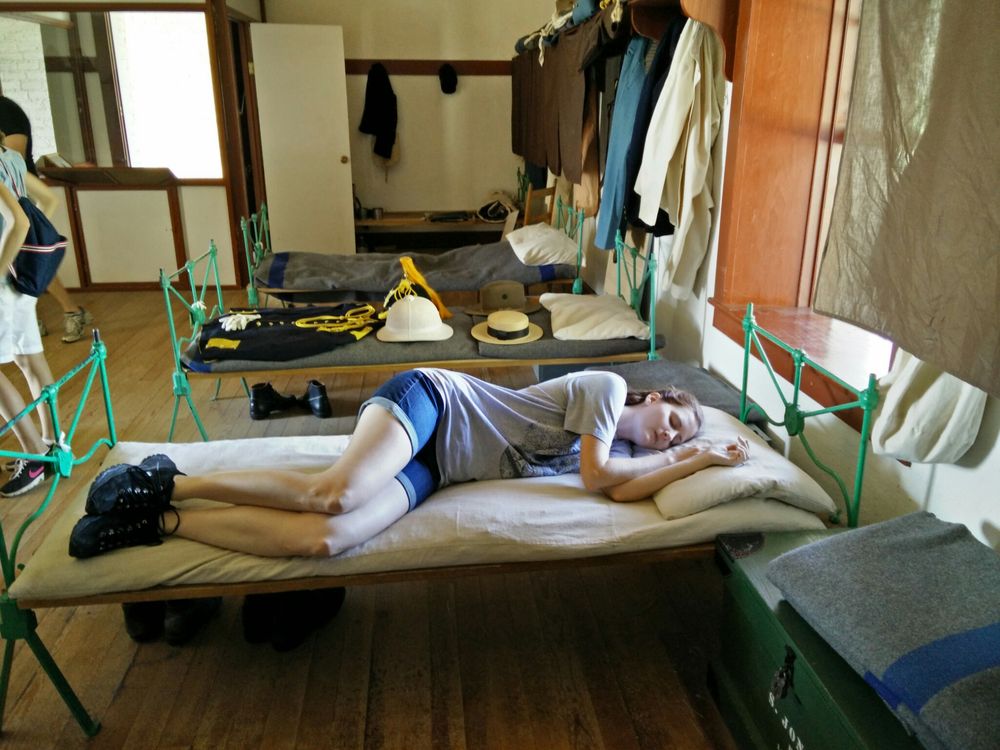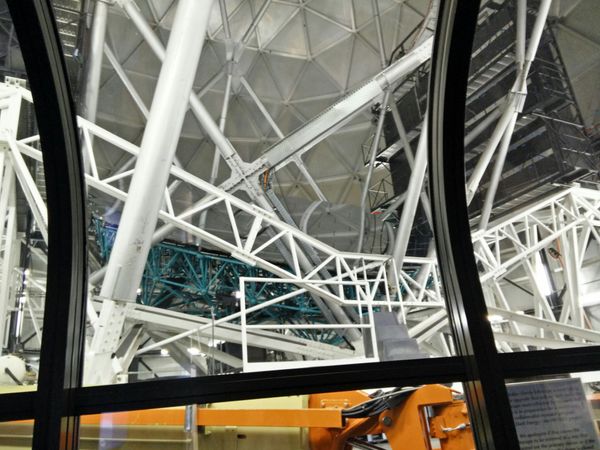Stacy: Day 14 (August 2, 2015)
Ah, today was much more leisurely than the past 14! We went to Mass at the local church, where we witnessed the Confirmation of a lovely young lady, in an historical church! What a privilege.
After changing into our sight-seeing clothes, we visited the (also) historic Fort Davis National Park. Yes, yes, we all got our National Parks Passports stamped, and then we talked to a nice guy for a long time. He was dressed in a U.S. Army soldier's uniform because of some special events they had going on that day.
Dad asked lots of questions, and we learned that, while General Custer definitely made some tactical errors at his "last stand," his demise was most likely due to the fact that the U.S. Government had given "repeaters" to the Native Americans. You see, "repeaters" are rifles which had a magazine that could hold 8 rounds.
Custer's troops had the usual single-shot rifles of that era. Even though repeaters were requested for the U.S. Army soldiers (throughout the country) many times, the government refused to give them any. It can be likened to the scenario of today: gangs have automatic guns, while the police have non-automatic guns. You can see how automatic guns can easily overpower non-automatic guns...
Custer was most likely made a scapegoat after his slaughter. Because, who better than to pin a huge failure on than someone who is already dead?
With modern day ballistic forensics [remember: even old guns make a unique signature on the bullet when fired], we can literally follow the Native American warriors from spot to spot, where he stopped to unload his 8 rounds into the U.S. soldiers before moving on as he reloaded.
It's a good thing we were in the barracks as the guy talked. I fell asleep!
Just kidding! I found their conversation fascinating!
Just a note: the guy was simply telling us all of this--Ft. Davis was not the location of "Custer's Last Stand" (which was in Montana). The mission of Ft. Davis, and the Buffalo Soldiers stationed there, was to bring peace to the area: the road from San Antonio to the Ft. Davis area. They kept travelers safe from both bandits and Native American raids.
We left Ft. Davis at lunch time, and headed back to our motel for some down time. Then, we left for dinner, and the Marfa Lights!
Now, for those of you who know me, I'm quite open minded (but still healthily skeptical) when it comes to strange phenomena. Apparently we had a marvelous night of active Marfa Lights. I definitely saw them, but cannot understand why no one has yet been able to figure them out. My mom and sister took lots of shots, and Kim included some in her day 14 blog. I'll see if I can obtain more for ya'll, after the trip, and will try to post them.
The lights are quite fascinating: there is no highway in the spot the lights appear (but newcomers often mistake lights from the highway near the viewing area as the Marfa Lights). The lights have been recorded as being seen in the 1800s, and Native Americans in the area (at that time, or earlier) have witnessed them, too.
They can appear in various temperatures of white, as well as red and blue. I'm not sure if I saw any red ones because there was a tower with a steadily blinking red light in that area, but closer to us than the majority of the lights. I did not see any blue lights (unless the really white lights are being considered as "blue").
I did did see white lights in two different temperature colors: the brilliant, clean white (like LEDs) and the slightly orangey (like incandescent bulbs). Both colors are typically found for car and house light bulbs. HOWEVER. None of these lights really moved. They would just appear . They would appear in the same general area (in several different places, sometimes in pairs or clusters, sometimes alone).
Some would just be there--BAM!--all bright and right there for a while (ten or so seconds? I never stopped to time them). Others would either appear faintly, and then suddenly become brighter, or appear brightly and then suddenly become fainter. Some would appear faintly, and then just disappear.
Again, they were not really moving (my arms were shaking while holding the binoculars), or their movements were minuscule and indistinguishable through my normal body shaking (breathing steadily or tired arms). I noticed no blinking pattern (the lights were steady while visible), except for the general area of their appearance in front of-but never above-the mountain range off in the distance. Two lights did consistently appear near the peak (but not on the peak-top) of one of the lower mountains.
I never witnessed two different temperature colors merge/un merge from each other, but they would still be relatively close together.
I have an uneducated, half-formed theory, but if real scientists can't figure it out, why would I? All in all, since the moon rose much later than the past few nights, we had a brilliant night sky to look at!


